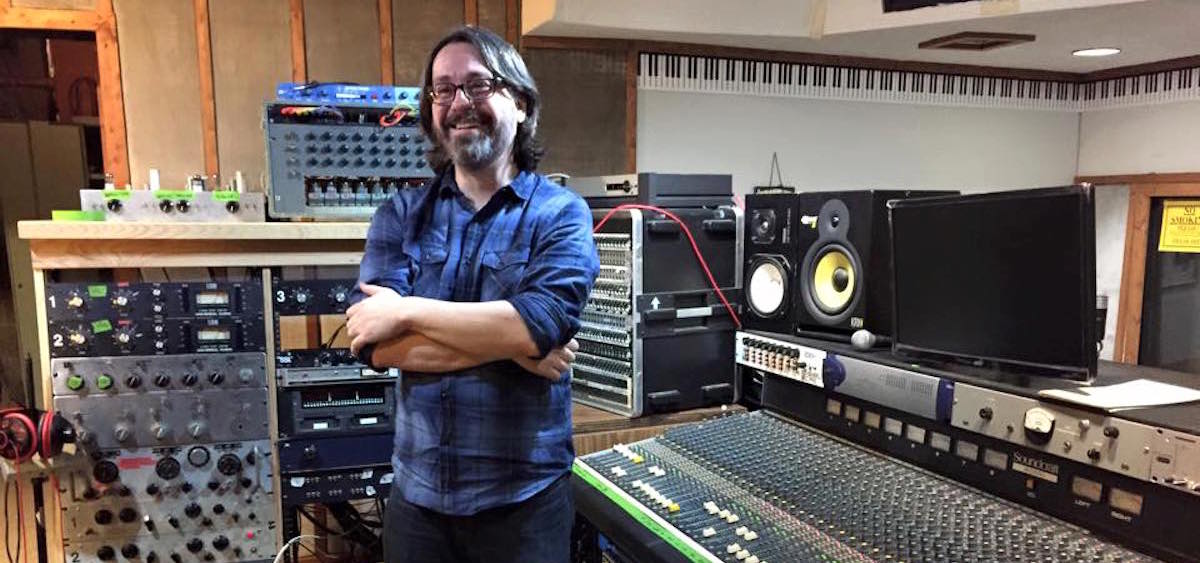Culture

Keith Hanlon: My Top Albums Of 2014
By: Keith Hanlon
Posted on:
This is the 12th in a series of year-end blog posts by WOUB staff, volunteers and contributors. Check out all of this year’s lists at this link.
As usual, my listening habits have been scattered everywhere this year. I will often binge on an artist’s catalog, and this year was no different.
At various points in the year, you could find me listening to records by Duke Ellington, Todd Rundgren, Prince, KISS or The Waterboys. As for new music, I found inspiration in a number of different places.
2014 was the year I reconnected with metal. I had been listening to classics from Iron Maiden, Black Sabbath and Judas Priest when I discovered The Oath. The band, led by Sonic Ritual guitarist Linnéa Olsson and vocalist Johanna Sadonis, broke up a month after releasing their self-titled album. Filled with plenty of dark references, the album recalls Sabbath’s Heaven and Hell and Maiden’s Killers. Plus, you gotta admit that “Satan come, come to me!” is a killer chorus.
I’m all about contrasts, and you can’t get farther away from metal than ambient/drone music (or can you?). Motion Sickness of Time Travel, aka Georgia’s Rachel Evans, released an album a month for a year, starting in September 2013. Each album in the Ballade Series were inspired by the Native American names for each full moon. They were released in limited editions of 50, so they sold out quickly (I was able to snag half of the releases). At the end of the year, they were compiled into one six-cassette compilation called Ballade. Each piece features her trademark ambient synth tones, sometimes vocals, and progress through nearly an hour of ambient bliss.
Mary Lattimore and Jeff Zeigler released Slant of Light, consisting of Lattimore’s harp accompanied by Zeigler’s synth patches and guitars, all processed to create an impressionistic album that has one foot in classic form and another in droney experimentation. Lattimore has been playing with Kurt Vile, Steve Gunn, Ed Askew and Thurston Moore, while Zeigler recently worked on War on Drugs’ latest album.
There were new albums released in 2014 from two of my favorite ’80s alternative artists. Robyn Hitchcock’s The Man Upstairs finds him in the studio with producer Joe Boyd (who produced some of my favorite late ’60s/early ’70s folk records from Nick Drake and Fairport Convention) and engineer Jerry Boys (whose work with Buena Vista Social Club made him an audiophile’s dream engineer). Hitchcock’s original songs, like “Trouble in Your Blood,” are both observant and personal, while his cover songs are surprisingly appropriate for a guy with such a distinct voice.
Meanwhile, The Church released Further/Deeper, which might be the perfect description of their career. The album has everything you would expect from them: pastoral electric guitars and cryptic lyrics, complimented by vocal melodies that are both catchy and desperate. I can’t think of any other band coming close to this combination of pop and abstraction.
Columbus musicians have released some fine albums this year. The first time I heard Connections, I immediately thought they had a lot in common with Guided By Voices. And while there are similar influences (classic ’60s melodic rock), I’ve come to realize that was a lazy comparison. You’d think that their third album in two years, Into Sixes, would show them running out of ideas, but they keep writing high-energy, catchy rock tunes.
The debut from The Girls, Let’s Not Be Friends, is filled with songs of heartbreak and longing that could have come right out of the Phil Spector catalog, performed by a tight rock and roll rhythm section.
The second album for Lydia Loveless is personal and cathartic. When she sings, “I apologize for my one-track mind” on the the title track, “Somewhere Else,” it’s obvious that she’s working through some demons. It’s emotional poetry.
Finally, the second album from Columbus space rockers EYE came out on vinyl this month. Second Sight is filled with musical references to Pink Floyd, Deep Purple and Black Sabbath in ways that you wouldn’t expect. They aren’t relying on formula: They are building on their influences and creating a very fresh perspective on prog rock. Plus the album opens with a gong!
Sharon Van Etten’s Are We There is her best album to date. These new songs are just as personal (some will say confessional, but isn’t that a female-singer-cliche?) as her previous work, but the poetry is refined and the music feels like it was recorded live (whether or not that’s true, I have no idea). Seeing her perform these songs in the afternoon at an outdoor festival would seem inappropriate, but damn, it was the best Sharon Van Etten show I’ve ever seen.
Scott Walker is a musical hero to me. He has made a career out of following his muse rather than following the money. After redefining himself in the early ’80s (from interpreting songs to letting songs speak through him), he released a series of increasingly intense albums. His new album, Soused, is credited to Scott Walker and Sunn O))) and while these are his songs, the collaboration with the drone metal band is more accessible than, say, Scott’s 2006 album The Drift. That doesn’t mean it’s a sellout or “Scott Lite.” Walker is still letting these voices speak through him, and the layers of guitars are still mining the area between chords and non-chords. Soused is a sonic masterpiece.
Keith Hanlon is a musician, recording engineer, and Ohio University alumnus from Columbus, Ohio. He has played with The Black Swans and Orchestraville, among others. He is currently producing The Mug & Brush Sessions video series on YouTube and is house engineer at Musicol Recording Studios.

